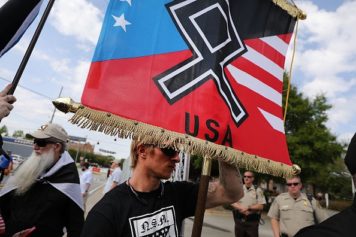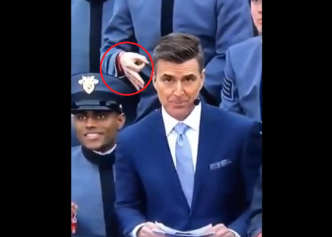A recent report by The Guardian found that Black men are the most common targets of police use of deadly force, and are nine times more likely to be killed than anyone else. This is not by happenstance, as it underscores the plight in which Black men have found themselves in America since day one.
Black men always have been the primary targets of white supremacist terror. This is because white men have fundamentally and viscerally feared the power of Black men. And what we have witnessed for over four centuries is a war on Black men in order to neutralize and destroy them. This is not merely about racial epithets, but rather a long, protracted power play in progress. White supremacy is a war of conquest against Black men, who are killed—often along with Black boys– in order to prevent them from rising up and exacting revenge. But white supremacy has also meant a system of control and domination over Black women, with Black men out of the picture—dead by police, in prison during their prime years, in prison for life or most of their life, or awaiting death in prison.
This is genocide, which is defined under Article II of the UN Genocide Convention:
…genocide means any of the following acts committed with intent to destroy, in whole or in part, a national, ethnical, racial or religious group, as such:
(a) Killing members of the group;
(b) Causing serious bodily or mental harm to members of the group;
(c) Deliberately inflicting on the group conditions of life calculated to bring about its physical destruction in whole or in part;
(d) Imposing measures intended to prevent births within the group;
(e) Forcibly transferring children of the group to another group.
In order to understand this, we need to reach back as far as slavery to examine a time-honored practice of white folks waging warfare against Black men in America.
The racial disparities in the 21st century criminal justice system arose on the plantation. The slave patrols were the regulated militias called for under the Second Amendment, as Professor Carl T. Bogus of the Roger Williams University School of Law notes. The amendment, Bogus argues, was an assurance to the Southern states that Congress would not disarm their slave patrols, thereby resulting in the unraveling of the slavery police state and the dreaded institution. When the Constitution was ratified, hundreds of slave rebellions had taken place, in a region where Blacks outnumbered whites.
The slave patrols, in which most Southern white men were obligated to serve, protected whites against Black insurrection. The patrols monitored the spaces where slaves congregated, and were able to enter plantations without a warrant and search slave quarters. They stopped slaves they found on the road, forced them to produce a pass, and made them prove they were not breaking the law. And runaway slaves who refused to surrender could be killed on the spot—by the patrols.
The slave codes were a racialized body of law that controlled Black people–enslaved and free alike—and established offenses and punishments based on whether the alleged perpetrators or victims were Black or white. Harsh punishments were reserved for Black people, including death, for offenses that could only be committed by Black people. This racialization of the law was sexual as well. For example, whites rarely faced charges for rape, yet Blacks accused of the rape or attempted rape of a white woman almost certainly faced death, as death was reserved nearly exclusively as a fitting punishment for Blacks. Under law, Black women were property, not people, and as such, could not be raped.
The protection of slavery was a white community effort, in order to preserve a system in which Black people were outside of the protection of the law, and whites could mete out physical violence against us, whether by extralegal means or by legal authority. In any case, all whites had the authority to police Black people, the universal and legitimate target of violence.
Meanwhile, the control of Black people through slavery continued in the Jim Crow era. Lynchings were popular means to maintain white control over Black people–and empower white poor and working class men in particular, who were always a rung above Black people on the ladder–at a time of uncertainty following the disruption and dislocation of the Civil War. This was about upholding white supremacy and affirming Black inferiority–through terror and intimidation– with a message to emancipated Black people to stay in their lane and know their place at the bottom of the sociopolitical hierarchy.
Lynching focused on the white obsession with the rape of white women by Black men. Typically, lynchings and race riots began with a rumor that a white woman was raped by a Black man, and then the mob took over. Under Jim Crow, rape was, by definition, a relationship between a Black man and a white woman. Antimiscegenation was a crucial part of the Jim Crow system of justice. White men raped Black women all the time, yet faced no legal sanction for doing so. Therefore, white men were able to exert their sexual control over Black women, and dominate and control Black men through lynching and anti-race mixing laws.
Between 1877 and 1950, an estimated 3,959 Black people were lynched in the U.S. Meanwhile, Jim Crow lynchings entered the court system, and a state-sanctioned death penalty supplanted lynchings. This was an effort by Southern states who feared the passage of an anti-lynching law in Congress. Thus, the lynch mob dusted itself off and became respectable, within the confines of the law, and with the trappings and legitimacy of the judicial system. This led to the “legal lynching,” where the courts assured the unruly mob that killing of a Black man—typically accused of raping a white woman–would be assured, provided the mob allowed the justice system to run its course. The system of white supremacy will provide.
Fast forward to today, and it is no accident that the death penalty is, on the whole, a punishment reserved for Black men. Further, it is not by chance that the war on drugs has amounted to a war on brothers, resulting in the decimation of Black families and communities through the disappearing of young Black men, and the filling of most of the prison beds with their bodies.
This context of white supremacy brought to bear on Black men, since slavery, helps us understand why Black men are the greatest target. Moreover, this provides a context to explain the epidemic of Black men gunned down by police–and the insistence by white folks that innocent, unarmed Black men are really guilty thugs who, if they want to live, merely should respect authority and comply with the police officers’ orders.



